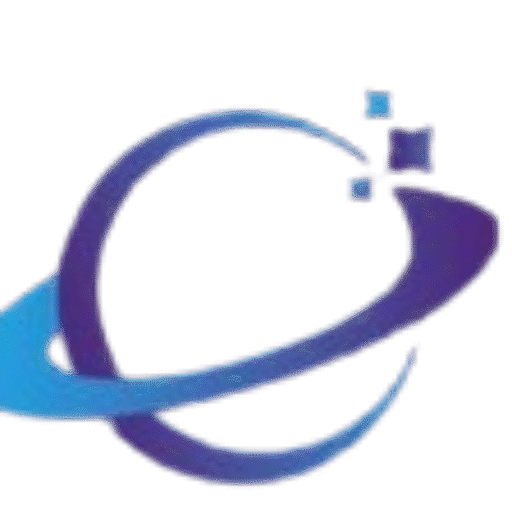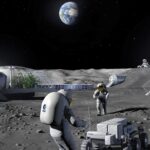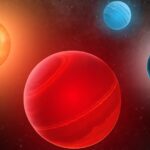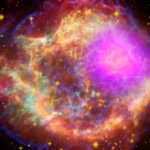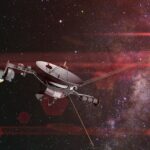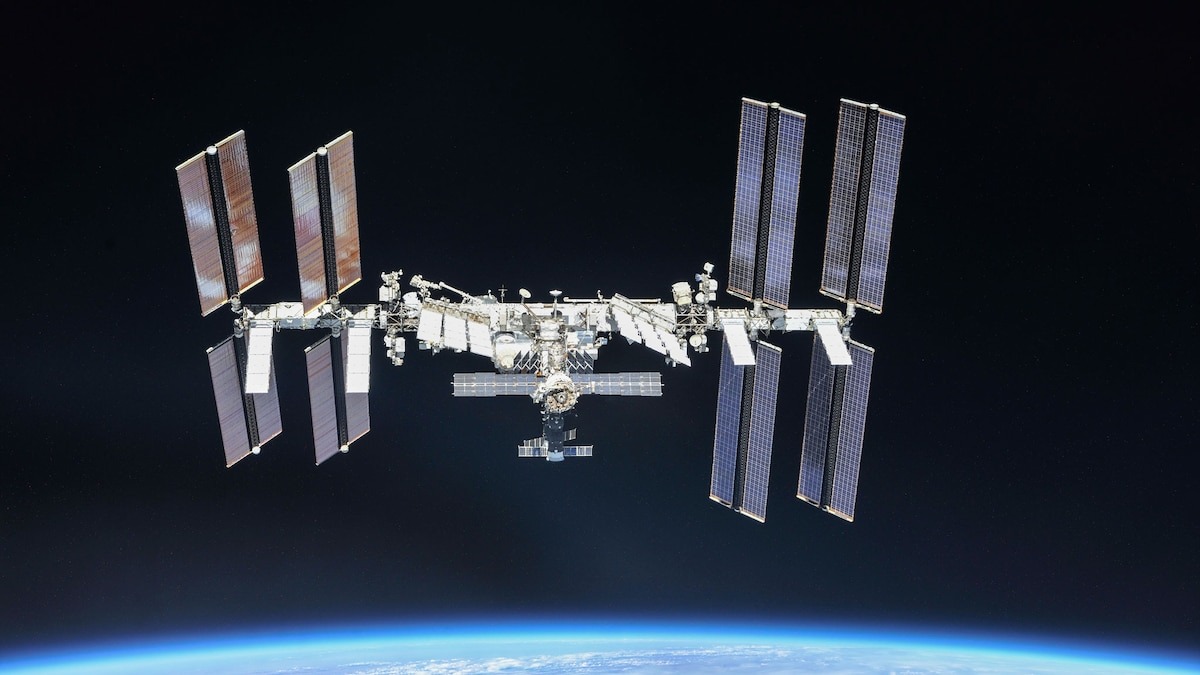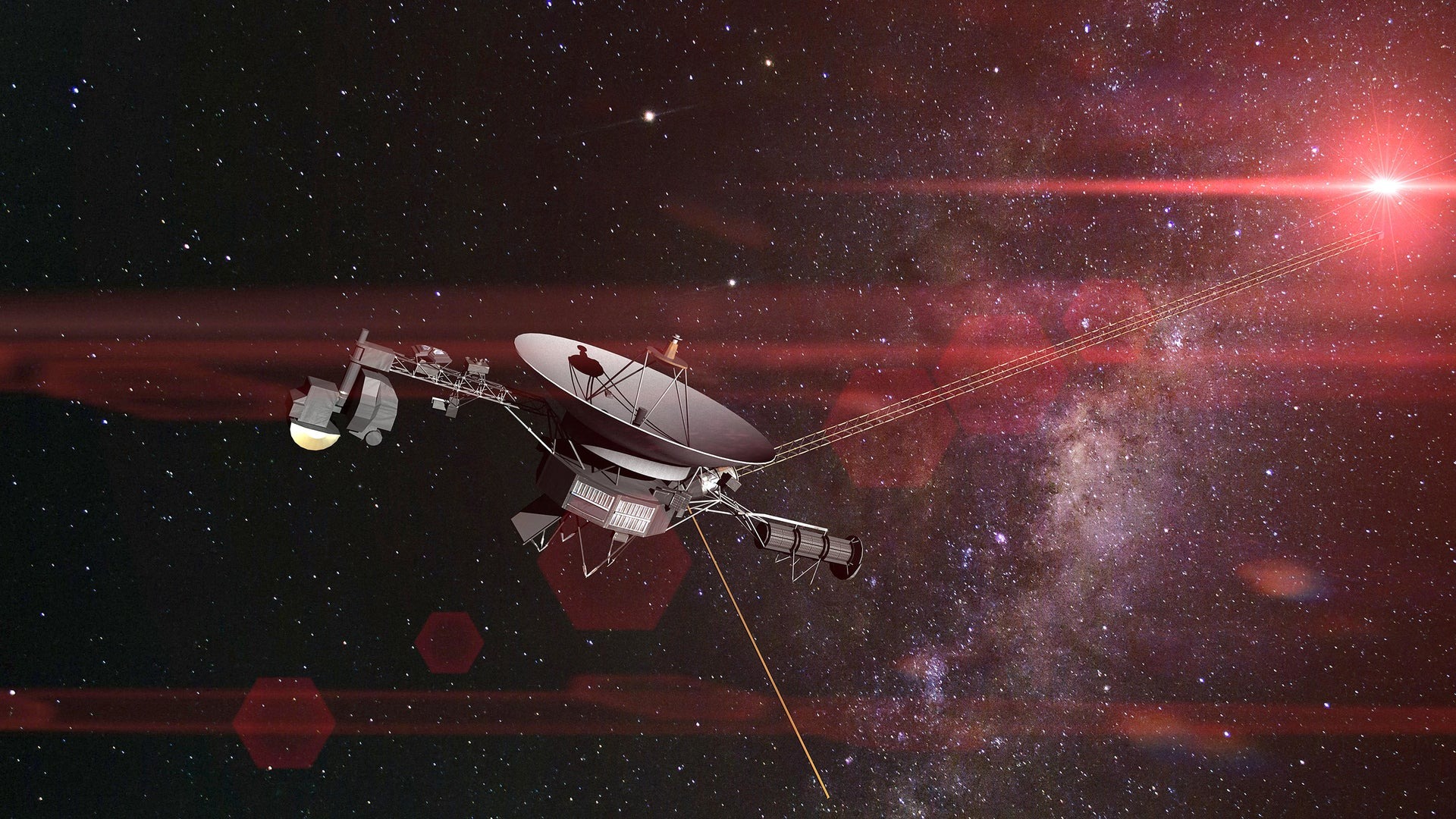Have you ever wondered what it would be like to float through the air, eat food that doesn’t fall, and see 16 sunrises every single day? While living in space was once a dream, for astronauts on the International Space Station (ISS), it is their everyday reality. The ISS is a huge scientific laboratory and a home for astronauts, orbiting our planet about 250 miles above our heads. It’s a one-of-a-kind place where people from different countries live and work together.
Living on the International Space Station is an experience that is both amazing and challenging. The feeling of floating is incredible, but even simple things like brushing your teeth or sleeping become a new challenge. In this article, we will take you on a journey through a day in the life of an astronaut to discover what it is really like to live and work in zero gravity.
A Home in Orbit: What Is the International Space Station?
The International Space Station (ISS) is the largest and most complex human-made object ever built in space. It is roughly the size of a football field and has as much living and working space as a six-bedroom house. It is made of many different parts, or “modules,” that were launched into space over many years and connected together in orbit.
The main purpose of the ISS is to be a science lab. Scientists on Earth can use the special conditions of zero gravity to do experiments that are not possible here. They study everything from how plants grow in space to the effects of zero gravity on the human body. The ISS is also a place where we learn how to live and work in space for a long time, which is a crucial step for future missions to the Moon and Mars.
The First Thing You Notice: Living in Zero Gravity
The most profound and immediate difference between living on Earth and living on the ISS is the lack of gravity. Astronauts call it microgravity because there is a tiny amount of gravity, but for all practical purposes, it feels like zero gravity. You are constantly floating.
This means that everything is different. There is no “up” or “down.” You can sleep on a wall or the ceiling. To move from one place to another, you simply push off a wall and float to the next room. While this sounds like a lot of fun, it also comes with its own challenges. Your body has to get used to not having gravity, and this can cause a kind of motion sickness, called “space sickness,” for the first few days.
A Day in the Life of an Astronaut
Astronauts on the ISS have a very busy and structured schedule. Their day is carefully planned by mission control on Earth. Here is a look at what a typical day is like for them.
Waking Up and Starting the Day
Astronauts get a set time to sleep, usually about eight hours. They don’t sleep in beds; they sleep in special sleeping bags that are attached to the wall. This is because if they weren’t attached, they would float around and might bump into things. The sleeping bags have zippers to keep them from floating out, and they often come with eye masks and earplugs to block out the constant hum of the station’s machines.
When they wake up, they begin their day with personal hygiene. Since there are no showers on the ISS (water would just float away), they have to use special wet wipes and a rinseless shampoo. They brush their teeth with a special toothpaste that they can swallow to avoid spitting.
Work, Work, Work: Scientific Experiments and Repairs
The main part of an astronaut’s day is work. They are constantly busy with a wide range of tasks.
- Scientific Experiments: They spend a lot of time doing experiments for scientists on Earth. This can include growing plants in space, studying how fire burns in zero gravity, or doing research on their own bodies to see how they are changing. The ISS is home to hundreds of experiments at any given time.
- Station Maintenance: The ISS is a very complicated machine, and it needs constant care. Astronauts spend a lot of time checking systems, cleaning air filters, and fixing things that break. They are part-time scientists and part-time handymen.
- Spacewalks: Sometimes, a big repair or a new piece of equipment needs to be installed on the outside of the station. This requires a spacewalk, which is a highly planned and dangerous event. Astronauts spend hours getting ready for a spacewalk and have to wear a bulky suit to protect themselves from the vacuum of space.
Meals in Space
Mealtime on the ISS is a very social part of the day. The food is specially prepared and packaged. It can be dehydrated food, which requires adding water, or it can be food in vacuum-sealed packages. There are no refrigerators or freezers, so the food is prepared to last for a long time.
Astronauts can’t just put food on a plate. The food would float away. So, they eat from special containers and bags. They use trays with magnets to keep their utensils from floating away. They often eat tortillas instead of bread because bread can create crumbs that could float around and damage the station’s equipment. Because of the lack of gravity, their taste buds can be a little dull, so astronauts often enjoy spicy food.
Staying Healthy: Exercise is Key
Living in zero gravity is very hard on the human body. Without the force of gravity, an astronaut’s bones and muscles lose strength very quickly. To fight this, astronauts are required to exercise for at least two hours every day.
They have special exercise machines on the ISS:
- Treadmill: They have a treadmill where they are strapped in with bungee cords to simulate their body weight.
- Exercise Bike: They have an exercise bike without wheels.
- Weightlifting Machine: They have a machine that uses pistons and flywheels to create resistance, acting like weights.
This daily exercise is crucial for their health and for making sure they can walk and stand up on their own when they return to Earth.
The Challenges of Living in Space
While living on the ISS is an incredible experience, it is not always easy.
- The View is Amazing, But Space is Dangerous: Astronauts get to see the Earth from a whole new perspective, and many say it is the most beautiful sight they have ever seen. But they are also in a very dangerous place. They have to worry about space debris, which are tiny pieces of old satellites or rockets that can hit the station at very high speeds.
- The Smell of Space: When astronauts come back inside after a spacewalk, they say there is a very distinct smell on their suits. They describe it as a metallic or burnt smell, like welding fumes. It is a unique smell of the cosmos that no one on Earth can experience.
- The Sensation and the Sickness: The lack of gravity can cause fluids to shift in an astronaut’s body. They often feel like they have a stuffy nose or a puffy face. This is a small price to pay for the amazing experience of floating.
- Isolation and Noise: The ISS is a small, confined place. The constant hum of the machines and the distance from family and friends can be a challenge. Astronauts are carefully selected for their ability to work well in a team and to handle the psychological effects of isolation.
Conclusion
Living on the International Space Station is a unique and amazing experience that pushes the limits of human adaptation. From floating through hallways and eating food from a bag to working on cutting-edge scientific experiments and exercising for two hours every day, the life of an astronaut is far from ordinary. The ISS is our home in orbit, a place where we are learning how to live and work in space for a long time. The knowledge we gain from living there is a crucial step in preparing for a future where humans will travel farther, to the Moon and Mars, and beyond.
